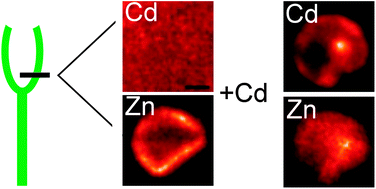Different strategies of cadmium detoxification in the submerged macrophyte Ceratophyllum demersum L.
Abstract
The heavy metal cadmium (Cd) is highly toxic to plants. To understand the mechanisms of tolerance and resistance to Cd, we treated the rootless, submerged macrophyte Ceratophyllum demersum L. with sub-micromolar concentrations of Cd under environmentally relevant conditions. X-ray fluorescence measurements revealed changing distribution patterns of Cd and Zn at non-toxic (0.2 nM, 2 nM), moderately toxic (20 nM) and highly toxic (200 nM) levels of Cd. Increasing Cd concentrations led to enhanced sequestration of Cd into non-photosynthetic tissues like epidermis and vein. At toxic Cd concentrations, Zn was redistributed and mainly found in the vein. Cd treatment induced the synthesis of phytochelatins (PCs) in the plants, with a threshold of induction already at 20 nM Cd for PC3. In comparison, in plants treated with Cu, elevated PC levels were detected only at the highest concentrations (100–200 nM Cu). Our results show that also non-accumulators like C. demersum store toxic metals in tissues where the heavy metal interferes least with metabolic pathways, but remaining toxicity interferes with


 Please wait while we load your content...
Please wait while we load your content...